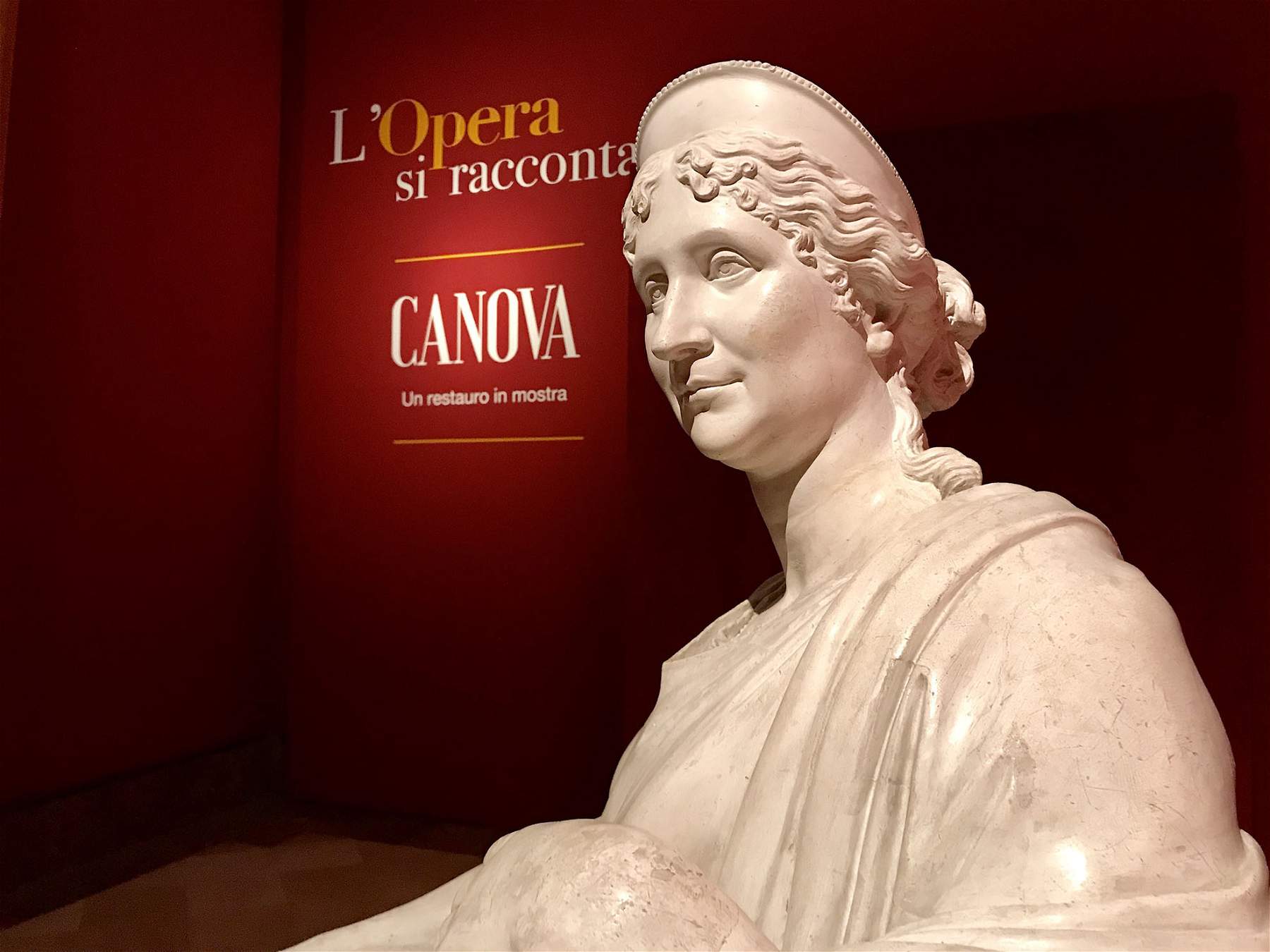The Museo e Real Bosco di Capodimonte, as a tribute to and on the occasion of the major exhibition Canova and Antiquity scheduled at the National Archaeological Museum in Naples from March 29, 2019, proposes the exhibition-focus Canova, un restauro in mostra (May 6-September 30, 2019), curated by Maria Tamajo Contarini and Alessia Zaccaria, in collaboration Amici di Capodimonte onlus and with the support of Tecno srl.The exhibition is part of the cycle of exhibitions-focuses L’Opera si racconta with which the Museo e Real Bosco di Capodimonte has decided to give voice to paintings, sculptures and art objects presented to the public in relation to other works or documents that can explain their context in a dedicated space: room 6, on the second floor.
The exhibition project was inaugurated in spring 2017 with Antoon Van Dyck’s Crucifixion. The second work on display was Pieter Brueghel the Elder ’s Parable of the Blind “read” in music with a Poem for Orchestra composed by the Neapolitan Stefano Gargiulo, which was followed by the exhibition of Konrad Witz ’s Sacred Conversation compared with two mid-15th-century manuscripts from the Manuscripts and Rare section of the National Library of Naples.
The work by Canova now going on display is the plaster cast of the sculpture depicting Letizia Ramolino Bonaparte seated on a Greek-style chair, commissioned directly by the Emperor’s mother, who was in Rome from March 31 to November 14, 1804. The studies kept in Possagno (no. 155), Venice and Heno (nos. 48-150) were probably executed during her stay, followed by the small model in Possagno 156 (no. 151). Passed to the Tuileries, the work was purchased in Paris in June 1818 by William Cavendish VI Duke of Devonshire, exhibited today at Chatsworth House.
The plaster sculpture presented in Naples was acquired in November 1808 by the court of Joachim Murat, French general and husband of Caroline, the Emperor’s younger sister, who was appointed king of Naples on August 1, 1808. The intervention of diagnostic analysis and restoration on the sculpture will be an opportunity to learn about the genesis of the cast and its characteristics, also in relation to the replicas made. During the course of the intervention there will be continuous opportunities for comparison with the two original replicas depicting Letizia Ramolino executed under Canova’s direct control, preserved at theAcademy of Carrara and the Canova Museum in Possagno. It will thus be possible to examine the volumetric effects that Canova sought through the alternation between the crepe of the matte areas, the semi-gloss of the draperies, and the gloss of the anatomical parts.
Each phase will be described indicating the products used, with their technical data sheets. An “open construction site” that will take the visitor inside the problems of the museum and the aspects related to the conservation, enhancement of the heritage preserved in it. A unique opportunity to understand the “genesis” of the Canovian works, the various stages of workmanship and the sculptural techniques used.
For all information you can visit the museum’s official website.
Pictured: Antonio Canova, Portrait of Letizia Remolino
Source: press release
 |
| A focus in Naples on the restoration of Antonio Canova's portrait of Napoleon's mother |
Warning: the translation into English of the original Italian article was created using automatic tools. We undertake to review all articles, but we do not guarantee the total absence of inaccuracies in the translation due to the program. You can find the original by clicking on the ITA button. If you find any mistake,please contact us.